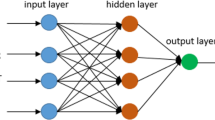Abstract
Wireless sensor networks using sink node increases the effectiveness in collecting data from various detecting and sensing fields. Sink node acts as an interface between the sensing field and the user agents. The data collected by sensor nodes is send to the sink nodes. The sink is base station, which collect and process data in the centralized mode. So base station is a special node which has unlimited energy and is active all the time. Placement of the base station will have great impact on the energy consumption and lifetime of WSNs. This paper proposes an efficient sink selection scheme (ES3) with proper ase station placement, for sensor network of IoT. In ES3 two kinds of nodes exist (1) network node, (2) non-network node. Network nodes involve in transmission of packets from sensing area to the base station. Non-network nodes will be waiting to join the sensing field and to select proper sink node after receiving broadcast packets. based on the placement of the base station, residual energy of network nodes, distance between the sensor node and the sink node, selection of sink node by each sensor node, routing structure is created. By considering 100 sensor nodes in NS2 a simulation is carried out to evaluate ES3. Simulation results proved that the ES3 will be more energy saving when the base station is placed in the middle of the sensing field. By using performance metrics like, average energy consumption of network, delay in processing packet, dropping ratio of the packet, jitter, packet delivery ratio, residual energy of network nodes, throughput an analysis is done using two scenarios, when the base station is placed in middle and in outskirts of sensing field.


























Similar content being viewed by others
References
Chen, X., et al. (2017). OFDM based multi-node transmission in the presence of phase noises for small cell backhaul. IEEE Communication Letters, 21(5), 1207–1210.
Shi, T., Cheng, S., Cai, Z., Li, Y., & Li, J. (2017). Exploring connected dominated sets in energy harvest networks. IEEE/ACM Transactions on Networking, 25, 1803–1817.
Cengiz, K., et al. (2016). Multi-hop low energy fixed clustering algorithm for WSNs. In IEEE 3rd international symposium on telecommunication technologies (ISTT) (pp. 31–34).
Demigha, O., Bedda, S., & Chabane, M. (2017). LEACH-SC: A spatial correlation-based protocol for energy-efficient data collection in wireless sensor networks (pp. 1–7).
Wang, H., Liu, Q., & Liu, M. (2016). NHEED: An energy-efficient multi-hop routing protocol based on HEED. In 12th World congress on intelligent control and automation (WCICA) (pp. 3219–3225).
Amirthalingam, K., & Anuratha (2016). Improved LEACH: A modified LEACH for wireless sensor network. In IEEE international conference on advances in computer applications (ICACA) (pp. 255–258).
Hu, C., et al. (2011). An improved clustering scheme for EEDC. In 2nd International conference on intelligent control and information processing (pp. 610–613).
Ranjani, S. S., RadhaKrishnan, S., & Thangaraj, C. (2014). Secure cluster based data aggregation in wireless sensor networks. In International conference on science engineering and management research (ICSEMR) (pp. 1–6).
Ferreira, F. E., Monteiro, F. A., & Sousa, I. (2016). Full-duplex MIMO and PLNC for the Y-networks. In 18th Mediterranean electrotechnical conference (MELECON) (pp. 1–5).
Feng, L., Zhou, Y., & Qiu, T. (2015). An energy-efficient self-organization routing strategy in tree networks. In Proc. 8th int. conf. mobile multimedia commun (pp. 233–236).
Herlich, M., & Karl, H. (2011). Reducing power consumption of mobile access networks with cooperation. In Proc. 2nd int. conf. energy-efficient comput. network (pp. 77–86).
Liu, Z., Zhou, S., Hua, Y., Zhang, Q., & Cao, D. (2012). Energy-aware network planning for wireless cellular system with inter-cell cooperation. IEEE Transactions on Wireless Communications, 11, 1412–1423.
Zhang, Q., Yang, C., Haas, H., & Thompson, J. (2014). Energy efficient downlink cooperative transmission with BS and antenna closing. IEEE Transactions on Wireless Communications, 13, 5183–5195.
Guo, W., & OFarrell, T. (2013). Dynamic cell expansion with self-organizing cooperation. IEEE Journal on Selected Areas in Communications, 31, 851–860.
Zhang, H., Chen, P., & Gong, S. (2010). Weighted spanning tree clustering routing algorithm based on LEACH. In Proc. 2nd int. conf. future comput. commun (pp. 2223–2227).
Author information
Authors and Affiliations
Corresponding author
Additional information
Publisher's Note
Springer Nature remains neutral with regard to jurisdictional claims in published maps and institutional affiliations.
Rights and permissions
About this article
Cite this article
Nalluri, P.R.K., Bala, G.J. An Efficient Energy Saving Sink Selection Scheme with the Best Base Station Placement Strategy Using Tree Based Self Organizing Protocol for IoT. Wireless Pers Commun 109, 869–895 (2019). https://doi.org/10.1007/s11277-019-06595-5
Published:
Issue Date:
DOI: https://doi.org/10.1007/s11277-019-06595-5




